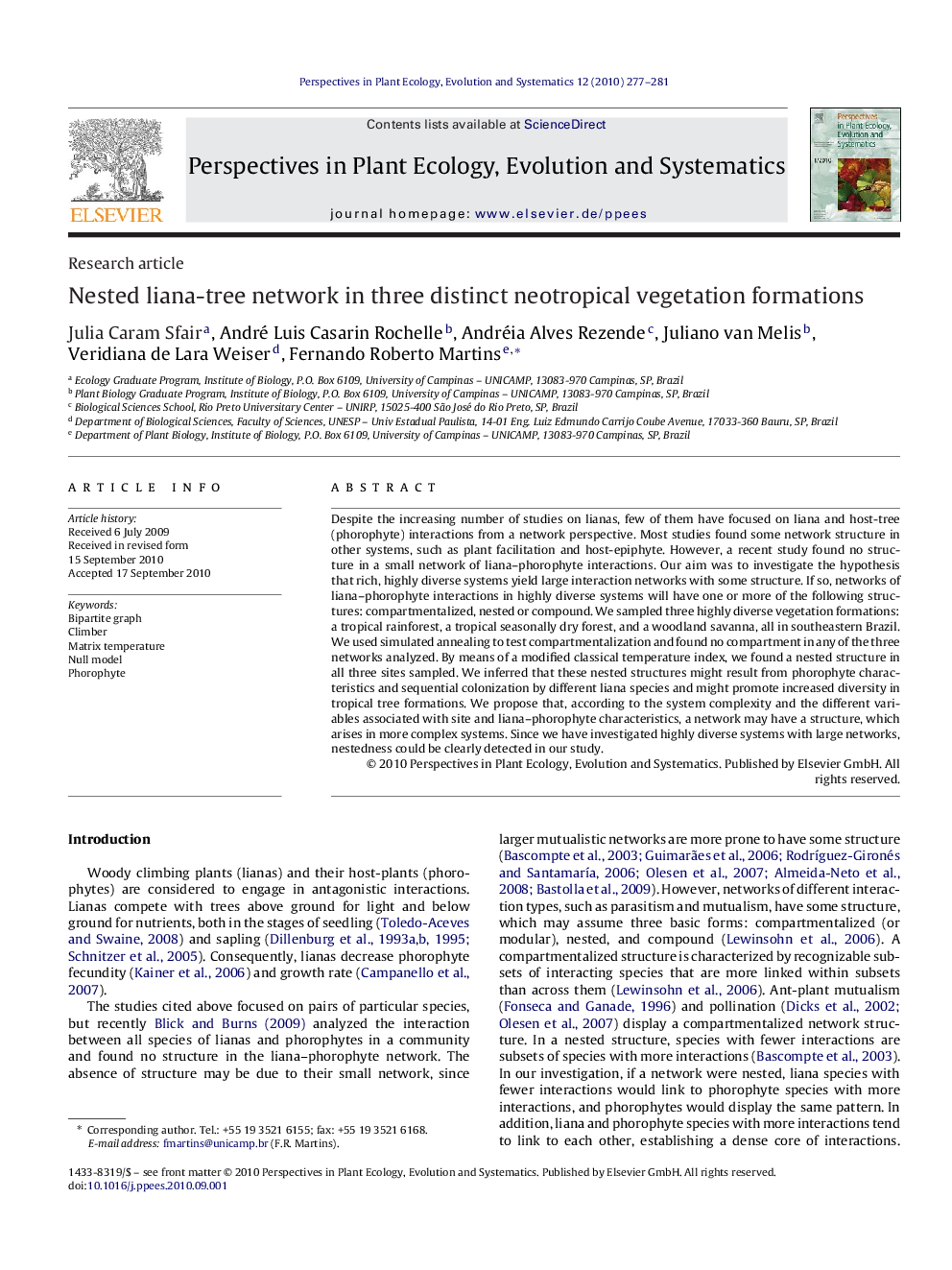| Article ID | Journal | Published Year | Pages | File Type |
|---|---|---|---|---|
| 4401123 | Perspectives in Plant Ecology, Evolution and Systematics | 2010 | 5 Pages |
Despite the increasing number of studies on lianas, few of them have focused on liana and host-tree (phorophyte) interactions from a network perspective. Most studies found some network structure in other systems, such as plant facilitation and host-epiphyte. However, a recent study found no structure in a small network of liana–phorophyte interactions. Our aim was to investigate the hypothesis that rich, highly diverse systems yield large interaction networks with some structure. If so, networks of liana–phorophyte interactions in highly diverse systems will have one or more of the following structures: compartmentalized, nested or compound. We sampled three highly diverse vegetation formations: a tropical rainforest, a tropical seasonally dry forest, and a woodland savanna, all in southeastern Brazil. We used simulated annealing to test compartmentalization and found no compartment in any of the three networks analyzed. By means of a modified classical temperature index, we found a nested structure in all three sites sampled. We inferred that these nested structures might result from phorophyte characteristics and sequential colonization by different liana species and might promote increased diversity in tropical tree formations. We propose that, according to the system complexity and the different variables associated with site and liana–phorophyte characteristics, a network may have a structure, which arises in more complex systems. Since we have investigated highly diverse systems with large networks, nestedness could be clearly detected in our study.
